2.Occurance of nanoscale particulate materials.
3.Potential bio-uptake of nanoscale particulates.
4.Semiconductor nanoparticules.
5.Wahrheit (Dupont), January 2004.
6.Presentation, ACS, January, 2004
7.Concerns about granulomas and fibers.
8.Observations and tentative conclusions.
9.Governmental regulation - particulate matter.
10.Problem areas for regulation of particulates.
11.NSF Guidelines for Nanocenter Research.
Fibers are generally of more health hazard than other forms of particulates. It is well established that the pathogenicity of a fiber in the lungs directly correlates with its biopersistency(Oberdorster 2000).
NTs are totally insoluble and probably one of the most biologically nondegradable man-made materials.Determining how the NT-induced granulomas progress would require a longer-duration study with this biopersistent material.
• Granulomas were observed in lungs 7 d or 90 d after an instillation of 0.5 mg NT per mouse (also in some with 0.1 mg);
• NT, regardless synthetic methods, types and amounts of residual catalytic metals, produced granulomas;
• Lung lesions in the 90-d NT groups, in most cases, more pronounced than those in the 7-d groups.
• Our study shows that, on an equal-weight basis, if carbon nanotubes reach the lungs, they are much more toxic than carbon black and can be more toxic than quartz, which is considered a serious occupational health hazard in chronic inhalation exposures.
• If fine NT dusts are present in a work environment, exposure protection strategies should be implemented to minimize human exposures.
Strong chemical and materials hygiene.
HS&E educational program for all participants.
Protection against inhalation and dermal exposure.
Proper procedures for handling of potentially hazardous materials.
Strict adherence to government and institutional regulations.
Proper disposal of waste materials.
Dissemination of information regarding potential hazards.
Proper reporting of all reportable incidents.

- 오늘 본 자료가 없습니다.
- 우리나라의 기업이나 조직의 특성에 가장 적절하고 필요하다고 생각되는 인사선발제도는 무엇인지 기술하시오
- 자원봉사론] 갈등에 대한 관점과 자원봉사 조직의 갈등을 살펴보고 갈등관리 방안에 대하여 기술하시오
- 비행청소년 또는 학교 밖 청소년의 일반적인 특성을 기술하고, 학교사회복지를 통해 제공될 수 있는 개입방법을 구체적으로 조사
- 교사의 과학놀이 지원방법 중 상호작용적 지원에 대하여 설명하고, 놀이 중 개방적 질문을 통하여 유아의 사고를 증진시켜 줄 수 있는 예시 상황 및 구체적인 질문의 예를 서술하시오
- [사회복지윤리와철학] 윤리적딜레마에 대한 사례를 제시하고 자신의 견해를 서술하시오
해당 정보 및 게시물의 저작권과 기타 법적 책임은 자료 등록자에게 있습니다. 위 정보 및 게시물 내용의 불법적 이용,무단 전재·배포는 금지되어 있습니다. 저작권침해, 명예훼손 등 분쟁요소 발견 시 고객센터에 신고해 주시기 바랍니다.



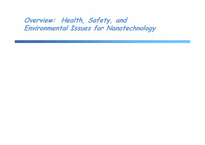
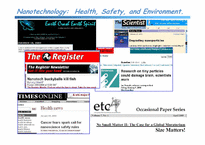
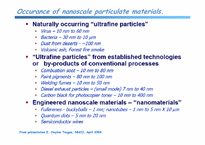
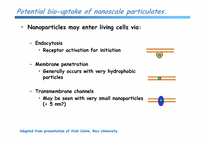
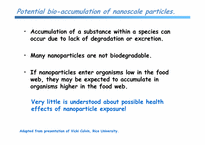
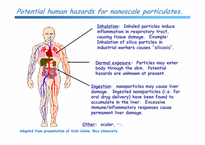
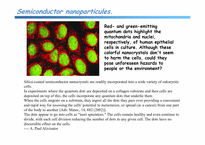
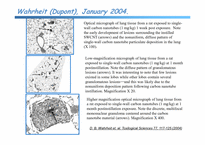
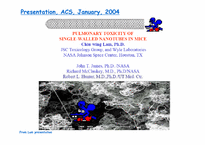
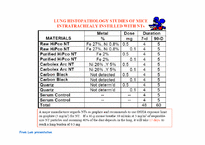
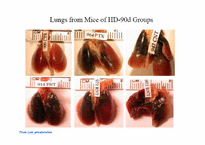


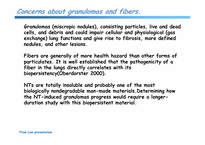
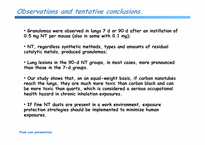
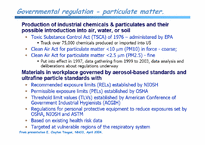
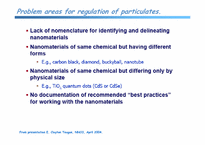
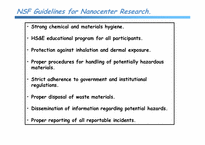
 분야
분야

